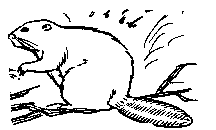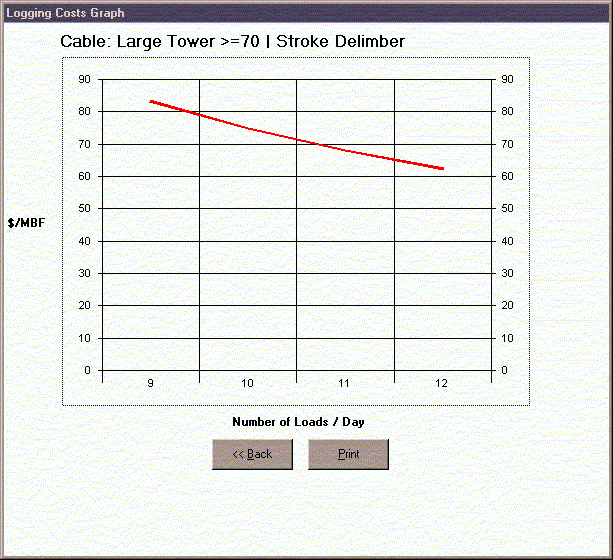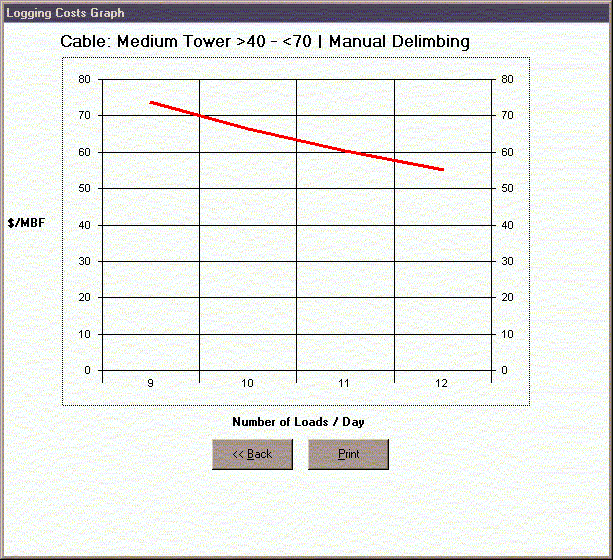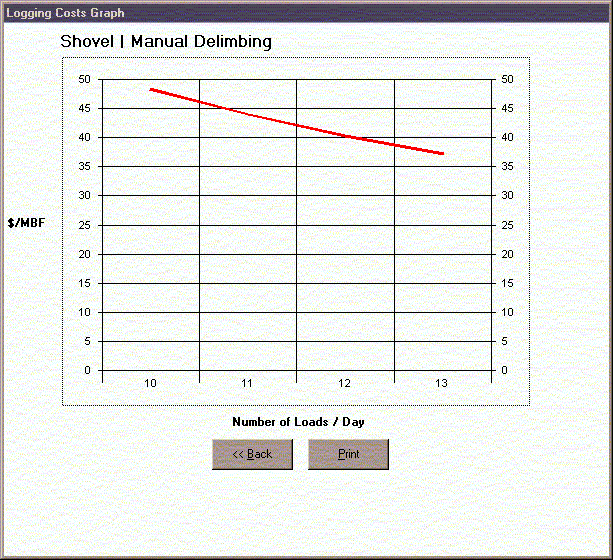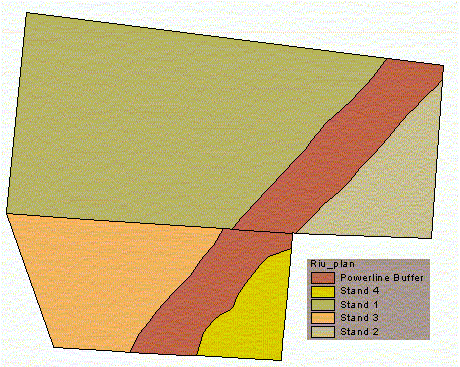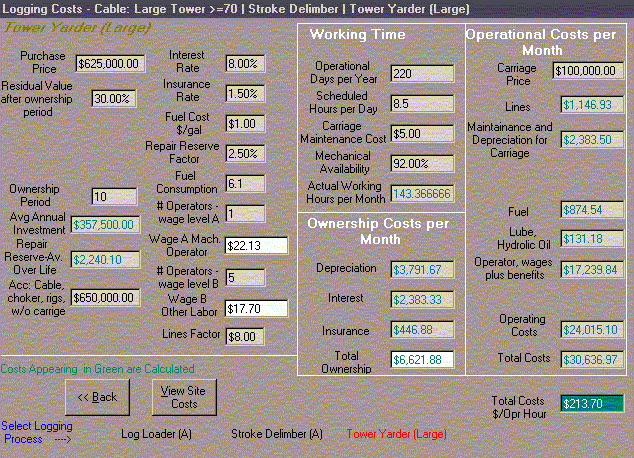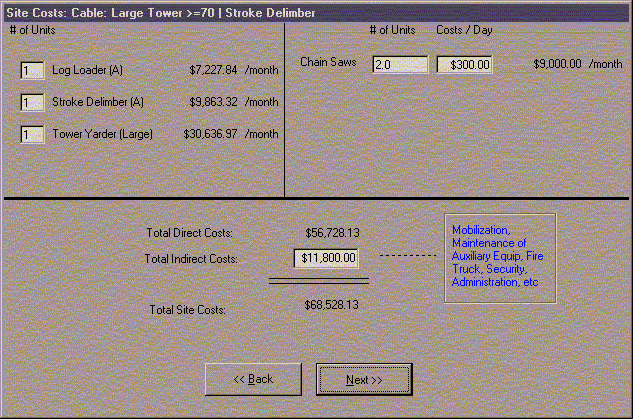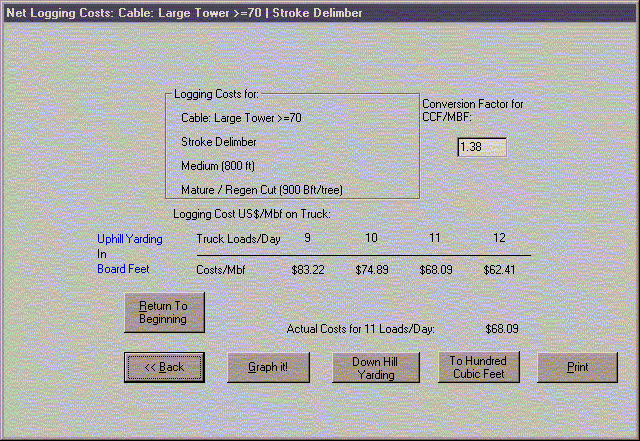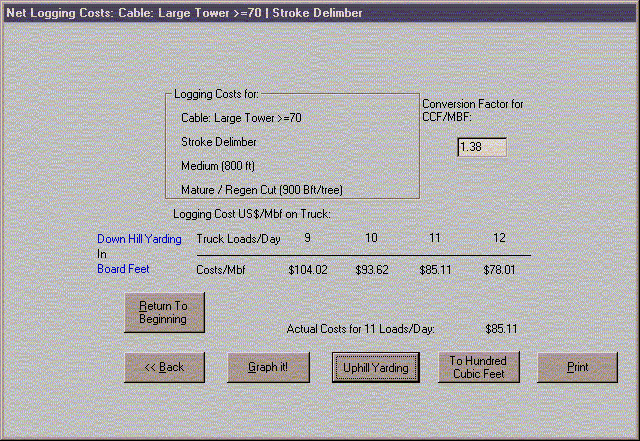Prepared by Alec Arntzen Many factors accumulate to create a total harvesting cost. These include equipment costs, productivity, maintenance, overhead, road construction costs, and haul cost, to name a few. Fortunately, there are computer programs, such as the WFI logging cost program, that take many of these factors into consideration. This cost analysis does not consider road construction costs or haul costs, but it does factor in most of the variables involved with equipment costs. COST/MBF The WFI program was used to determine harvesting costs using three different harvest systems. The large tower system consists of a tower yarder 70 feet or larger, a log loader, and a stroke delimber. The medium tower system consists of a tower yarder between 40 and 70 feet tall, and a log loader. It uses manual delimbing. Both of these were performed because the ideal tower, as determined by LoggerPC modeling, was 70 feet tall. Cost analysis was also performed on a shovel logging system because approximately half of the unit is suitable for ground based logging. A discussion of how the WFI Logging Cost program works is located below. Predictably, the large tower yarder was the most expensive, and the shovel system was the least expensive. You can view the results of the WFI analysis in Table 1. These results assume a productivity of 11 loads/day for the yarding systems (See productivity analysis below), and 12 loads/day for the shovel system. Table 1. Results from the WFI Logging Cost Program. Analyses were performed for a large tower operation (larger than 70 feet), medium tower operation (40-70 feet), and for a shovel logging operation.
Since productivity is a variable in any operation, WFI outputs results for a range of productivity. You can see this range in the following three figures. Figure 1 is the range of cost/Mbf for the large tower system (uphill yarding). Figure 2 is the medium tower system (uphill yarding), and figure 3 is the shovel logging system.
Figure 1. Graphical representation of the cost/Mbf vs. productivity for a large tower yarding system.
Figure 2. Graphical representation of the cost/Mbf vs. productivity for a medium tower yarding system.
Figure 3. Graphical representation of the cost/Mbf vs. productivity for a shovel logging system.
TOTAL HARVESTING COST The total harvesting cost can be determined by multiplying the cost/Mbf by the total volume of timber to be harvested. Since we are harvesting two different stands with three different yarding systems, I found the harvesting cost for each type of yarding system based on the amount of board feet in the stand.
Figure 4. A map of the four major stands in the North Beacon Timber Sale. Figure 4 shows the different stands in the Timber Sale. Stands 1 and 3 will be harvested. Stand 3 will be yarded uphill. This is the only uphill yarding area planned. There are 850 Mbf in stand 3. With a cost of $68.09/Mbf for uphill yarding (assuming a large tower), the total cost of harvesting stand 3 is approximately $58,000. Downhill yarding accounts for about 550 Mbf in stand 1. With a cost of $85.11/Mbf for downhill yarding (assuming a large tower), the total cost for harvest with downhill yarding is about $47,000. The remaining area of stand 1 will be harvested with tractor yarding. At a cost of $40.31/Mbf, these 2050 Mbf will cost about $83,000 to harvest. The total harvest cost for the entire unit is about $188,000. See Table 2 for a breakdown of these costs. Table 2. Harvesting cost breakdown by type of yarding system. Cost/Volume assumes a large tower yarder, where applicable. Timber Volume estimates are from the stand data information.
PRODUCTIVITY Given the output of six minutes per turn and 850 board feet per turn from the production report, the productivity could be determined in terms of loads/day. The production report focused solely on cable systems, so the shovel logging productivity of 12 loads/day was assumed from the WFI defaults. The following calculations were performed to find cable yarding productivity in truck loads/day: Assume 80% efficiency (5000 bf/load) / (850 bf/turn) = 6 turns/load (6 turns/load) * (6 min/turn) = 36 min/load (480 min work day) / (36 min/load) = 13.3 loads/work day (13.3 loads/day) * (80% efficiency) = approx. 11 loads/day
HOW TO USE THE WFI LOGGING COST PROGRAM The WFI logging cost program considers factors such as equipment purchase price, operator wages, fuel consumption, insurance, productive hours, and many others. You can see these factors in Figure 5, the cost information required by WFI to perform an analysis for a 70 foot tower yarder. Information must also be input for the log loader, and the stroke delimber if one is used.
Figure 5. Variables required by the WFI Logging Cost Program to be used in determining harvest costs for a cable yarding system using a 70 foot tower yarder, a stroke delimber, and a log loader. After all of this information has been entered or verified, the total site costs are determined. The results are in dollars/month, based on the equipment selected, and the various costs entered in Figure 5. Figure 6 shows the output of site costs from WFI. Notice that indirect costs such as maintenance of auxiliary equipment, fire truck, security and administration are included as indirect costs.
Figure 6. Total site costs for a harvest system consisting of a 70 foot tower yarder, a log loader, and a stroke delimber. Notice that WFI considers indirect costs as well as direct equipment costs. Next, the yarding distance, harvesting regimen, and productivity are taken into consideration. Yarding distance can be short (400 ft), medium (800 ft), or long (1500 ft). Harvesting regimen can be a regenerative cut or a partial cut. Productivity is in terms of truck loads/day and board feet/load. The result is a summarized cost/Mbf for the system. Figure 7 shows the results for our 70 foot tower with uphill yarding. Figure 8 shows the results for downhill yarding. The output is computed for a range of productivity. There is an option to graph the results, showing the increased efficiency of having more truckloads per day.
Figure 7. Overall costs in $/Mbf for a 70 foot tower yarding system, yarding uphill.
Figure 8. Overall costs in $/Mbf for a 70 foot tower yarding system, yarding downhill. These results from the WFI Logging Costs program can then be used to calculate the overall costs of the operation (neglecting road construction and haul cost) simply by multiplying by the volume of timber to be harvested. Back to outline
|
